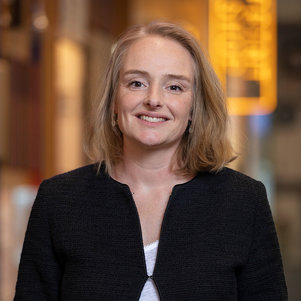Prof.mr.dr. E.M. Bruggeman
Professor Building Law
Department of Management in the Built Environment
“The law never operates in a vacuum.” According to professor of Building Law Evelien Bruggeman, construction is above all an interaction between public and private, management and technology. "Building law brings together different legal doctrines in a practical context, that's what makes it so interesting".
Bruggeman is no newcomer to TU Delft. As an external PhD candidate (in other words, without an appointment), she obtained her doctorate in the Faculty of Architecture and the Built Environment in 2010 for her research into purchase/contracting agreements in the housebuilding industry. “When people purchase a newly built home, they enter into a contract according to a standard model. That model has been in place for some forty years. In my research back then, I closely examined all of the legal aspects of that agreement.” She then went to work for the Research Service at the Supreme Court of the Netherlands. “Although my work there involved hardly any building law, I continued to publish about it.” In 2016, she continued her career as a researcher at the Dutch Institute for Construction Law (IBR). She has spent the last few years conducting research into Building Information Modelling (BIM) and contracting. “The aim of BIM is to enable parties involved in construction to work together in a more integrated way. If a client agrees a separate contract with each contractor, but also obliges them to work together in BIM, what obligations do all of these parties have towards each other? As well as that, an architect may interpret a specification in a different way than a contractor. If the complexity of the working relationship is not properly understood and interpreted, it is unlikely that the intended collaboration will work properly. That kind of understanding and interpretation is what lawyers are there for.”
Strong links
As Professor of Building Law, Bruggeman is following in the footsteps of her former promotor, Monika Chao Duivis. “Monika was also my boss at IBR. When she left earlier this year, I successfully applied for her job. That means I’m also succeeding her as director of the IBR. It’s a weird twist of fate, because the positions are not connected to each other.” Bruggeman will work two days a week in Delft. Her main hope is to be able to contribute to the further integration of the field of building management, the technical construction disciplines and law. “In the building sector, there is sometimes insufficient understanding of each other’s specialisations and world views. The question of how parties can collaborate more effectively, in different relationships to each other, has long been an issue. There are still major gains to be made when it comes to safety in construction, for example.”
These varying relationships are reflected in different forms of contract in which tasks, responsibilities and liabilities are either strictly separated or highly integrated, depending on the nature of the project and the risks. “Part of the answer can be found in an understanding of the fact that a strong chain can only exist if the links within it are also strong. In other words, your role and your performance have to be of benefit to the greater whole.” According to Bruggeman, a balanced distribution of responsibilities across the entire chain is more likely to result in effective collaboration than a position in which partners in the chain have all covered their own individual liabilities from the outset.
Not yet fully defined
Although one might not always think it, the primary role of lawyers is to prevent disputes, rather than attempt to settle them, stresses Bruggeman. “It is from that perspective that a contract should be written.” As a specialist in building law, she is very used to questioning experts in other fields about processes and techniques. “New applications can lead to agreements that lack clarity. If things have not yet been fully defined, you can see that reflected in the contracts. As a lawyer, it’s my job to find out how an application is experienced and used by different professional groups in order to be able to place its use in a legal context.” As far as Bruggeman is concerned, the issue of how best to apply BIM and how this can be configured legally is something that her chair can help to explore, together with colleagues in the faculty. “There’s still a lot of progress to be made in that area. The same applies to managing interface risks or organising a circular economy.”
A professor of Building Law can help cultivate knowledge and understanding through research into key issues, but also by providing good teaching. “I often teach lawyers, but also designers and engineers, and I really enjoy it. I now have the honour of telling up-and-coming designers and engineers what’s what. And conversely, they will no doubt teach me how the built environment can be made more attractive and sustainable. Teaching is a two-way process and I’m very much looking forward to it.”
More information
Education, publications and secondary employment
Chair of Building Law
